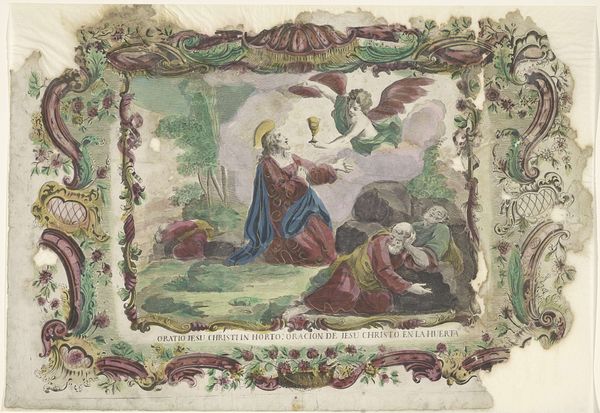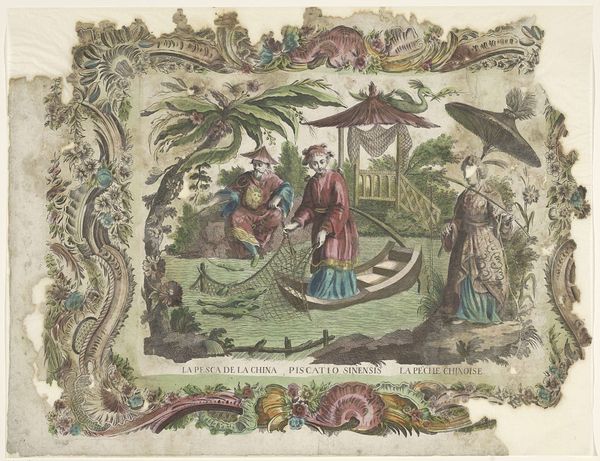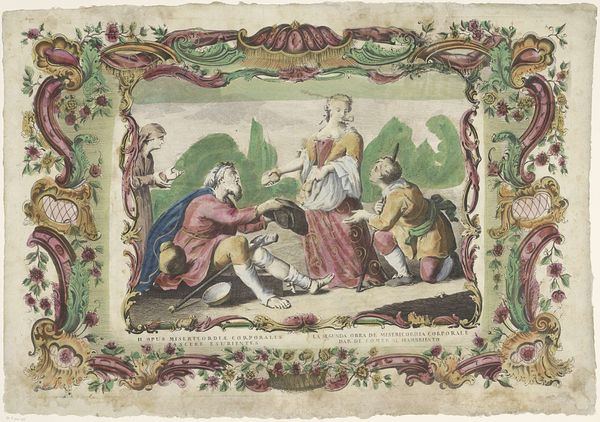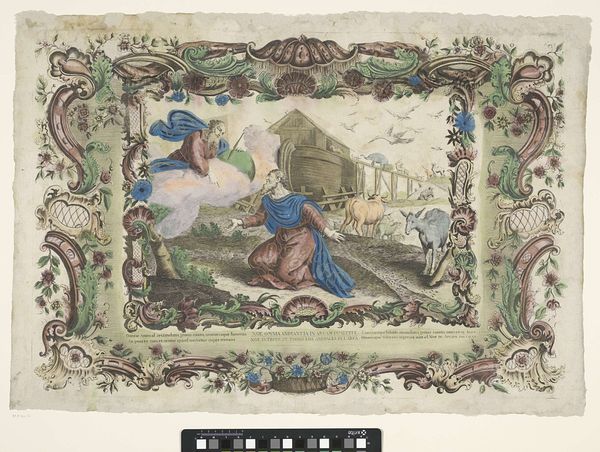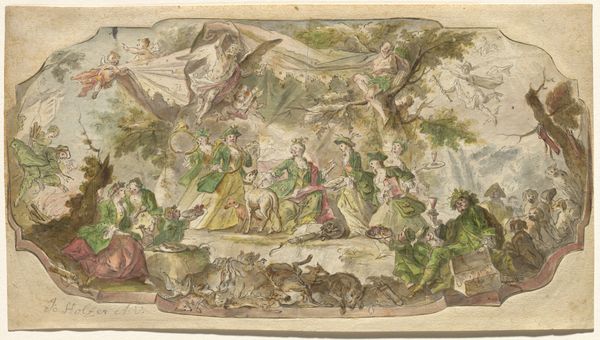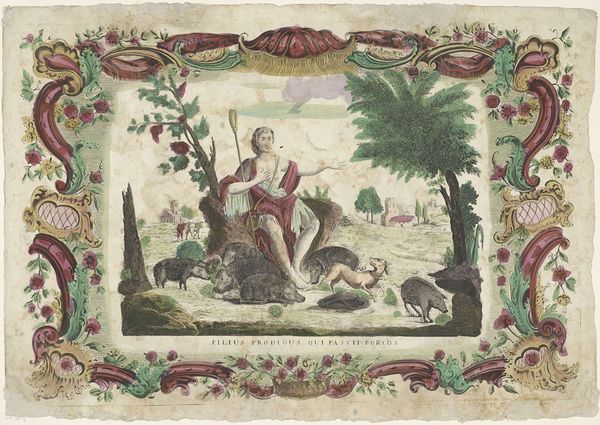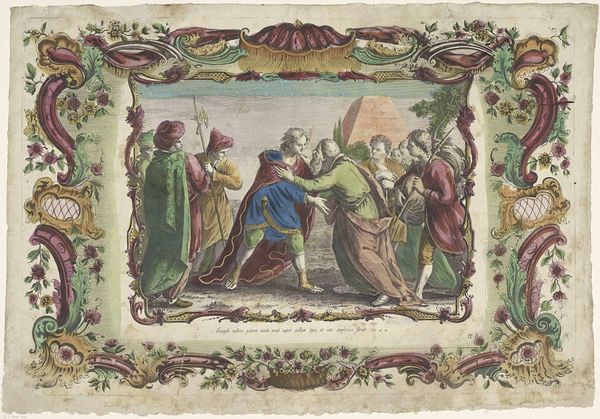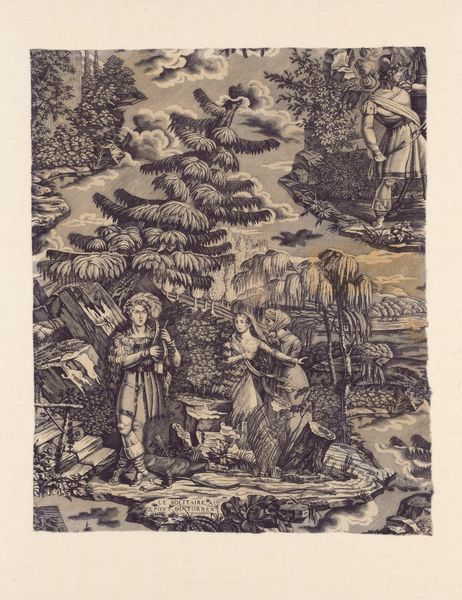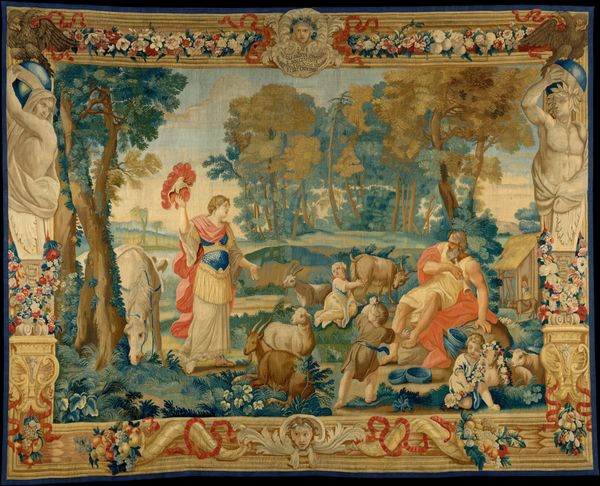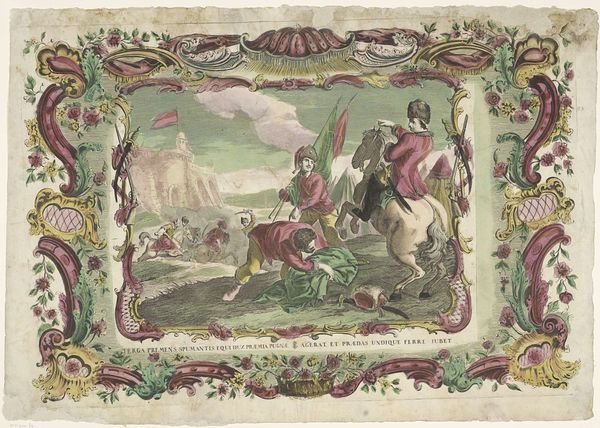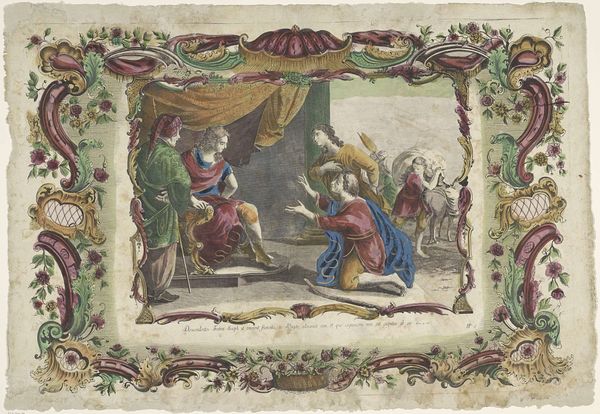
drawing, print, etching, watercolor
#
portrait
#
drawing
#
water colours
# print
#
etching
#
landscape
#
watercolor
#
coloured pencil
#
genre-painting
#
rococo
Dimensions: height 560 mm, width 770 mm
Copyright: Rijks Museum: Open Domain
Curator: This print, known as "Lucht," by Giovanni Volpato, produced in the 18th century, employs etching and watercolor to present a scene brimming with the leisurely pursuits characteristic of genre paintings from that period. What are your initial thoughts? Editor: There's an immediate feeling of whimsical fantasy; the floral border feels overly decorative and the hazy washes of color create a dreamy, idealized atmosphere. I almost get the feeling I am staring at a theatre set. Curator: Exactly, consider its Rococo elements: this style, very popular during the eighteenth century, moves away from serious subject matter often representing scenes of pleasure. I’d even push further. The arrangement reflects a prevailing societal yearning for Arcadia, influencing modes of aristocratic relaxation, aesthetic values and even class identity at this point. Editor: Absolutely. Look at the central figures, for instance – a woman gesturing expansively while a flute-playing gentleman serenades. But beneath, musical instruments appear scattered on the ground, along with the discarded staff...broken symbols and rejected norms. I would go on to ask, who gets to play, who must simply serve as an object of their pleasure? Curator: Your interpretation resonates deeply. Within the symbolic framework of visual culture from this time period, musical instruments—as symbols of refined, elevated society—acquire profound layers of meaning when considering class and performance of gender and its influence upon other marginalized groups in society during this era. We see here through composition both the celebration of and, perhaps, a critique about leisure that needs decolonization even now. Editor: I hadn't considered how performance ties into themes of aspiration in that period. This imagery gives visual form to cultural memories linked both pleasure but also privilege. How, then, can contemporary audiences contextualize it given current social consciousness about exclusion? Curator: By recognizing the power dynamics in play and how these continue in the 21st century! “Lucht” gives us opportunities through art historical theory—cultural theory even; or feminist standpoints perhaps?—to ask profound questions regarding hierarchies encoded aesthetically, socially, politically during the Age of Enlightenment, or indeed, today still Editor: Yes. This serves as powerful invitation towards reimagining visual symbolisms linked so inextricably within our world today even and to start questioning them with even new zeal; it's why works like this still speak so emphatically now in all truth.
Comments
No comments
Be the first to comment and join the conversation on the ultimate creative platform.
